Address
304 North Cardinal
St. Dorchester Center, MA 02124
Work Hours
Monday to Friday: 7AM - 7PM
Weekend: 10AM - 5PM
Address
304 North Cardinal
St. Dorchester Center, MA 02124
Work Hours
Monday to Friday: 7AM - 7PM
Weekend: 10AM - 5PM

In a world where technology continues to evolve at a rapid pace, the kitchen appliance industry is no exception. It’s a landscape teeming with innovation, where the latest advancements are reshaping the way we interact with our daily cooking routines. From smart ovens that can predict your preferences to refrigerators that keep an inventory of your groceries, the kitchen of the future is not just a place for culinary creations—it’s a hub of interconnected technology and efficiency. This article delves into the cutting-edge trends, the impact of innovative cold-resistant models, and the broader implications of these changes on the market and consumer behavior.
The European and American kitchen appliance market has long been a beacon of innovation and design, offering consumers a wide array of high-tech and stylish solutions to enhance their culinary experiences. With a history marked by the evolution from traditional to modern appliances, this market has become a melting pot of cutting-edge technology and consumer demand.
In Europe, where culinary traditions are deeply rooted in history, the kitchen appliance market has seen a surge in the integration of smart technology. From the bustling cities of Paris and Rome to the cozy cottages in the countryside, European homes are increasingly equipped with appliances that not only streamline cooking tasks but also offer a touch of sophistication.
Similarly, in the United States, the kitchen has become the heart of the home, a space for gathering and enjoying meals. American consumers are known for their preference for convenience and efficiency, leading to a market that is rich with a variety of kitchen appliances that cater to every need, from the smallest countertop blender to the largest professional-grade oven.
The European market, in particular, is characterized by its diversity. Countries like Germany, Italy, and the UK are known for their premium brands that offer high-quality appliances with advanced features. These brands often prioritize energy efficiency and sustainability, reflecting a broader societal shift towards environmentally friendly products.
In the United States, the kitchen appliance market is dominated by a few major players, each with its own unique approach to innovation. From the sleek designs of KitchenAid to the powerful performance of Viking, American consumers have a plethora of options to choose from, each designed to meet the diverse needs of different households.
One of the key trends in both the European and American markets is the integration of smart technology. Smart appliances are becoming increasingly popular, allowing homeowners to control their kitchen devices remotely via smartphones or voice assistants. This not only adds convenience but also provides insights into energy consumption and usage patterns, promoting a more sustainable lifestyle.
Another significant trend is the focus on versatility. Appliances that can perform multiple functions are in high demand. For example, a single unit that can act as a refrigerator, freezer, and wine cooler is a hit among consumers looking to save space and streamline their kitchen layouts.
Design is also a crucial factor in the kitchen appliance market. Modern appliances are not just about functionality; they are also about aesthetics. The sleek lines of a professional-grade refrigerator or the vibrant colors of a countertop blender can make a significant impact on the overall look and feel of a kitchen.
In the realm of innovation, European and American manufacturers are pushing the boundaries. From induction cooktops that provide precise temperature control to dishwashers that use AI to optimize cleaning cycles, the market is filled with cutting-edge technology that promises to revolutionize the way we cook and clean.
Despite these advancements, the kitchen appliance market faces challenges. One of the biggest is the need for affordability. As technology becomes more sophisticated, the cost of appliances can climb, making them less accessible to budget-conscious consumers. Manufacturers must find a balance between innovation and affordability to remain competitive.
Moreover, the market is also influenced by regulatory changes. In both Europe and the United States, there are strict guidelines regarding energy efficiency and safety, which can impact the design and production of new appliances.
In conclusion, the European and American kitchen appliance market is a dynamic and ever-evolving sector. It is driven by consumer demand for innovation, efficiency, and style. As technology continues to advance and consumer preferences change, the market is poised to see further developments that will shape the future of home cooking and kitchen design.

In recent years, the kitchen appliance market in Europe and America has undergone a remarkable transformation, driven by technological advancements, changing consumer preferences, and a growing emphasis on sustainability. Here’s a closer look at some of the key trends shaping this dynamic sector.
Smart Integration is on the RiseHomeowners are increasingly seeking appliances that can be controlled remotely via smartphones or voice assistants. Smart kitchen appliances, such as smart ovens, refrigerators, and dishwashers, are becoming more popular, offering users the convenience of monitoring and managing their kitchen equipment from anywhere.
Energy Efficiency and SustainabilityEnvironmental consciousness is driving a shift towards more energy-efficient appliances. Consumers are not just looking for appliances that save money on energy bills but also those that are made from sustainable materials and have a lower carbon footprint. Energy Star-rated appliances are becoming a standard expectation in the market.
Cooking Technology EvolutionCooking appliances are no longer just about heat; they’re about precision and speed. Induction cooktops, for example, have gained traction for their quick heat-up times and efficiency. Meanwhile, sous-vide machines and precision cookers like the Thermomix are popular among those who enjoy gourmet cooking at home.
Healthy Living InfluenceThe push for healthier lifestyles has extended into kitchen appliances. Air fryers and multi-functional cookers that offer healthier cooking options without sacrificing flavor are becoming more sought after. Additionally, there’s a growing market for countertop blenders and food processors that can help users prepare nutritious meals quickly and easily.
Customization and PersonalizationToday’s consumers want appliances that fit their unique needs and styles. This trend is leading to more customizable options, such as appliances with interchangeable color panels or modular designs that allow for a personalized kitchen setup.
Health and Safety FeaturesSafety has always been a priority in kitchen appliances, but the latest models are pushing the boundaries even further. Features like child locks, automatic shut-offs, and non-slip surfaces are becoming standard. Moreover, appliances with air filtration systems and steam cleaning capabilities are appealing to those concerned about kitchen hygiene.
Interactive and Educational ContentManufacturers are recognizing the value of providing more than just a product; they’re offering a service experience. Some appliances now come with interactive features, such as educational cooking apps and built-in recipe books, encouraging users to explore new cuisines and cooking techniques.
Connectivity and Data AnalyticsThe era of the Internet of Things (IoT) has arrived in the kitchen. Appliances that can connect to the internet and provide data analytics on usage patterns and maintenance needs are becoming more common. This connectivity can lead to predictive maintenance, energy savings, and even personalized recommendations for recipes based on the user’s dietary preferences.
Design and AestheticsThe kitchen is no longer just a utilitarian space; it’s a social hub and a showcase of personal style. As a result, kitchen appliances are being designed with sleeker lines, modern materials, and innovative designs that complement the latest kitchen trends, from minimalist aesthetics to bold, statement pieces.
Innovation in MaterialsThe materials used in kitchen appliances are also evolving. There’s a move towards using eco-friendly materials like bamboo and recycled plastics, as well as durable materials that can withstand the rigors of everyday use. The focus is on creating appliances that are not only functional but also sustainable.
In conclusion, the European and American kitchen appliance market is evolving at a rapid pace, reflecting a consumer base that values convenience, health, sustainability, and personalization. As these trends continue to shape the industry, it’s clear that the kitchen of the future will be a testament to the seamless blend of technology, aesthetics, and practicality.

The kitchen appliance industry has long been a playground for innovation, but with the ever-changing climate and consumer demands, the need for cold-resistant models has become increasingly apparent. As temperatures dip lower in various regions around the world, the demand for appliances that can withstand extreme cold without compromising performance or lifespan is on the rise. Here are several key reasons why innovative cold-resistant models are not just a trend but a necessity.
Climate Change and Seasonal VariabilityThe impact of climate change is reshaping our world, and one of the consequences is more frequent and severe weather patterns. In many parts of the world, winter temperatures are becoming more extreme, with prolonged periods of cold weather. This has led to a growing need for appliances that can reliably operate in sub-zero temperatures, ensuring that homes remain comfortable and functional throughout the coldest months.
Expanding Geographic MarketsAs global markets expand, companies are looking to tap into regions with colder climates. From the,。 Adapting appliances to these conditions is not just about meeting consumer expectations but also about gaining a competitive edge in new markets.
Consumer Expectations and ComfortConsumers today are more informed than ever before and expect their appliances to perform flawlessly under any circumstances. The rise of smart homes has also introduced a new set of expectations, where appliances are not just functional but also capable of integrating seamlessly with other smart devices. A cold-resistant model ensures that the kitchen remains a hub of activity, regardless of the temperature outside.
Durability and LongevityAppliances designed to handle extreme cold often feature enhanced durability. Components are selected and engineered to withstand harsh conditions, which can lead to a longer lifespan. This is not just beneficial for the consumer but also for the environment, as fewer appliances end up in landfills.
Technological AdvancementsThe development of new materials and insulation techniques has allowed manufacturers to create appliances that are both cold-resistant and energy-efficient. Advances in thermal insulation, for example, can significantly reduce heat loss, making appliances more efficient in cold environments.
Energy Efficiency and Cost SavingsCold-resistant models are not just about survival in extreme conditions; they are also about efficiency. In colder climates, appliances often have to work harder to maintain their intended performance, which can lead to increased energy consumption. By designing appliances that can maintain their efficiency in cold temperatures, manufacturers can offer consumers significant cost savings over time.
Regulatory ComplianceAs the importance of energy efficiency and sustainability grows, regulations are becoming stricter. Manufacturers must comply with new standards that often require appliances to perform well in a variety of conditions. Cold-resistant models are part of this compliance, ensuring that appliances meet the latest regulatory requirements.
Health and Safety ConsiderationsIn colder climates, the health and safety of residents are paramount. Cold-resistant appliances can help prevent issues such as frozen pipes or food spoilage due to appliance failure. This not only protects the well-being of the occupants but also prevents costly repairs or replacements.
Cultural AdaptationDifferent cultures have different cooking habits and preferences. For example, some regions may use their freezers for longer periods due to the frequency of cold weather. Appliances that are cold-resistant are better suited to meet these cultural demands, ensuring that the appliance is not just a tool but a part of the local culinary tradition.
Global Supply Chain ChallengesThe global supply chain faces its own set of challenges, particularly in terms of shipping and storage. Cold-resistant models can help mitigate the risk of damage or spoilage during transit, especially in regions where extreme cold is a common occurrence.
In conclusion, the need for innovative cold-resistant models in the kitchen appliance industry is multifaceted. It’s driven by climate change, market expansion, consumer expectations, technological advancements, and a host of other factors. As the industry continues to evolve, the demand for these resilient appliances is only expected to grow, making them an indispensable part of modern kitchen ecosystems.
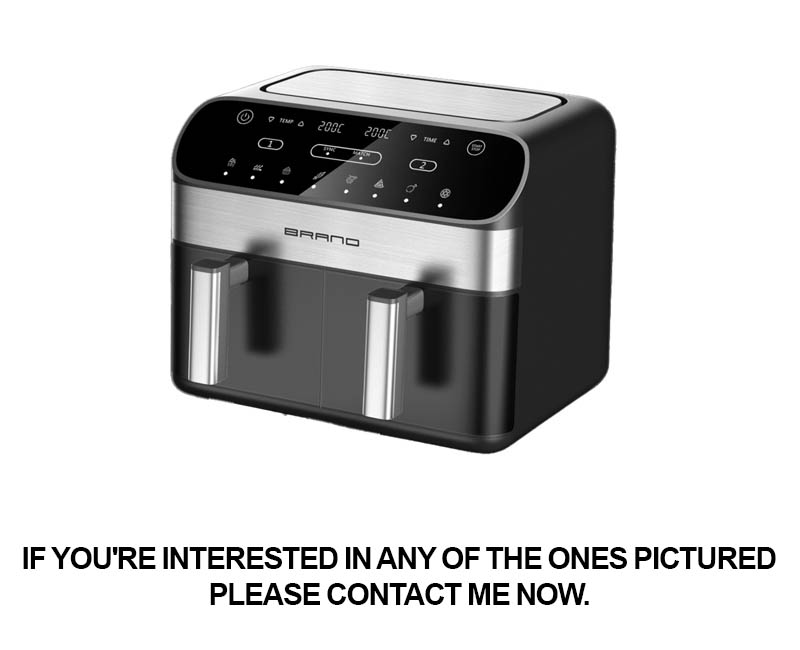
In the ever-evolving landscape of kitchen appliances, the introduction of a 30°C cold-resistant model marks a significant shift in the industry. This innovative design promises to revolutionize the way we interact with our kitchen gadgets, offering unparalleled performance in extreme temperatures. Let’s delve into the intricacies of this groundbreaking model and its potential impact on the market.
The 30°C cold-resistant model is a testament to the advancements in technology and materials science. Traditional kitchen appliances are designed to function within a specific temperature range, often failing to perform optimally or at all when subjected to extreme cold. This new model, however, has been engineered to withstand temperatures as low as -30°C, expanding the scope of its applications and user base.
One of the primary benefits of this cold-resistant model is its versatility. Whether you’re in a mountain retreat, an arctic research station, or simply dealing with a cold snap at home, this appliance is ready to perform. Its robust construction ensures that it can maintain its functionality in frigid conditions, making it an invaluable asset for those who live in or visit climates with extreme cold.
Moreover, the 30°C cold-resistant model is not just about surviving in the cold; it’s about thriving. The appliance’s advanced insulation and heat retention features allow it to preserve food and maintain temperatures even when external conditions are harsh. This means that your groceries, leftovers, and even your favorite frozen treats will stay fresh and delicious, no matter how low the temperature drops.
Energy efficiency is another key aspect of this groundbreaking model. Despite its ability to operate in extreme cold, the appliance is designed to minimize energy consumption. This is achieved through innovative insulation techniques and smart temperature control systems that adapt to the environment, ensuring that power is used efficiently without compromising performance.
The market for kitchen appliances has traditionally been segmented by climate and geographical location. The introduction of the 30°C cold-resistant model challenges this segmentation by offering a universal solution that can cater to a global audience. This could potentially disrupt the status quo, leading to a more standardized approach to kitchen appliance design and manufacturing.
From a consumer perspective, the 30°C cold-resistant model offers peace of mind. No longer do homeowners need to worry about their appliances failing during a sudden cold snap or when they travel to colder regions. This model is designed to be a long-term investment, providing reliability and durability that extends beyond the typical lifespan of kitchen appliances.
Innovation is not just about creating new products; it’s about solving real-world problems. The 30°C cold-resistant model addresses the practical challenges posed by extreme cold, offering a practical solution that can improve the quality of life for many. For instance, in regions where cold weather is the norm, this appliance can help maintain a more consistent and comfortable indoor environment.
The impact of the 30°C cold-resistant model extends beyond individual households. In commercial settings, such as restaurants, hotels, and hospitals, where food safety and quality are paramount, this appliance can ensure that perishable items are stored and served at optimal temperatures. This can lead to improved health and safety standards, as well as reduced waste due to spoilage.
As with any technological breakthrough, the 30°C cold-resistant model is not without its challenges. The cost of production and the initial investment required for consumers to adopt this new technology may be barriers to widespread adoption. However, as the market matures and production scales up, these costs are expected to decrease, making the appliance more accessible to a broader audience.
The introduction of the 30°C cold-resistant model is a game-changer in the kitchen appliance industry. It represents a leap forward in design, functionality, and user experience. By pushing the boundaries of what is possible, this model sets the stage for future innovations that will continue to shape the way we interact with our kitchen environments. Whether it’s in the cozy confines of a well-insulated home or the challenging conditions of a polar research station, the 30°C cold-resistant model is poised to become an indispensable tool for anyone who values culinary excellence and reliability.
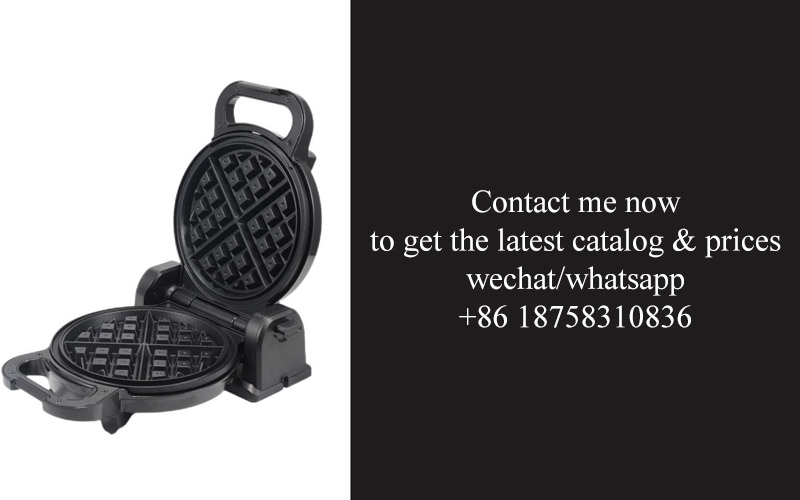
The -30°C Cold Resistant Model isn’t just a kitchen appliance; it’s a leap forward in innovation. Its features and benefits are designed to revolutionize the way we interact with our kitchens, offering unparalleled performance in extreme conditions.
Its ultra-thick insulation is a cornerstone of its design, providing a solid barrier against the harshest cold. This isn’t just about keeping the contents cool; it’s about ensuring that the appliance itself remains operational, even when the outside temperature plunges to -30°C. The insulation is so advanced that it keeps the interior temperature stable, preserving food and drinks at the perfect chill without the risk of freezing.
One of the standout features is the triple-layered glass door. It’s not just about aesthetics; this design is a marvel of engineering. The outer layer is a tough, impact-resistant material, while the inner layer is a high-efficiency insulator. The middle layer is a special temperature-regulating glass that prevents condensation, ensuring clarity and visibility at all times. This not only enhances the appliance’s performance but also adds a touch of sophistication to any kitchen.
The cooling system of the -30°C Cold Resistant Model is a marvel in itself. It employs an eco-friendly refrigerant that is not only more efficient but also environmentally responsible. The system is whisper-quiet, thanks to advanced sound-dampening technology, making it ideal for home use without disturbing the peace. The rapid cooling feature allows for quick chilling of hot foods and beverages, while the precise temperature control ensures that delicate items like ice cream or wine are stored at the perfect temperature.
Energy efficiency is a critical aspect, and this model excels in this department. It’s equipped with an intelligent energy management system that adjusts cooling cycles based on usage patterns. This not only saves energy but also extends the life of the appliance. The LED lighting inside the appliance is not only energy-efficient but also provides a bright, clear view of the contents, making it easier to organize and access items.
Safety is paramount, and the -30°C Cold Resistant Model doesn’t compromise. It features a child lock to prevent accidental tampering, and an anti-vibration system that ensures the appliance runs smoothly, reducing the risk of spills or accidents. The appliance also has a leak detection system that immediately alerts users to any potential issues, preventing damage to the kitchen and ensuring the integrity of the contents.
One of the most innovative features is the smart connectivity. The -30°C Cold Resistant Model can be controlled remotely via a smartphone app, allowing users to adjust settings, monitor temperatures, and even set reminders for restocking. This level of connectivity not only adds convenience but also allows users to optimize their storage space for maximum efficiency.
The benefits of the -30°C Cold Resistant Model are numerous. It’s a space-saving solution, with its compact design fitting seamlessly into any kitchen layout. The ability to store a vast array of foods and beverages, from fine wines to ice cream, means that users can have a well-stocked “fridge” at their fingertips. This model also doubles as a stunning piece of kitchen art, with its sleek design and elegant lines that complement modern aesthetics.
Furthermore, the appliance’s durability means it’s a long-term investment. The high-quality materials and robust construction ensure that it can withstand the rigors of daily use, year after year. The peace of mind that comes with knowing your perishables are stored safely, even during power outages, is invaluable.
In terms of environmental impact, the -30°C Cold Resistant Model is a step in the right direction. By using eco-friendly materials and energy-efficient technology, it reduces the carbon footprint associated with traditional appliances. This is not just good for the planet but also for the wallet, as users can save on energy bills over time.
Lastly, the appliance’s versatility cannot be overstated. Whether you’re a culinary enthusiast who needs to keep ingredients fresh for elaborate dishes or a busy professional who wants to ensure their drinks are cold at all times, the -30°C Cold Resistant Model has you covered. It’s a testament to the ingenuity of modern appliance design, offering functionality, convenience, and style in one compact package.

The kitchen appliance market is a dynamic landscape, constantly evolving with technological advancements and changing consumer needs. As we delve into the analysis of this market, it becomes evident that consumer reactions are a pivotal factor shaping the trajectory of the industry. From the initial buzz around new products to the long-term adoption rates, understanding consumer reactions is crucial for manufacturers and retailers alike.
In recent years, there has been a noticeable shift in consumer preferences. The demand for energy-efficient and sustainable appliances has surged, reflecting a broader environmental consciousness. This trend has led to a proliferation of smart kitchen gadgets that not only save energy but also offer convenience and connectivity. Consumers are increasingly seeking appliances that can integrate with their smart homes, providing a seamless and efficient cooking experience.
The introduction of the -30°C cold-resistant model has sparked a wave of excitement. This innovation addresses a specific need in the market, particularly for those living in colder climates where traditional appliances may struggle to maintain performance. Consumers have responded positively, recognizing the value of a product that can withstand extreme temperatures without compromising functionality.
One of the key reactions from consumers has been a sense of relief. In regions where extreme cold is a, the reliability of kitchen appliances is paramount. The -30°C cold-resistant model offers peace of mind, knowing that the fridge, freezer, or other appliances will continue to work as intended, even during the harshest winters. This has been particularly welcomed by homeowners who have previously had to deal with breakdowns or the inconvenience of having to move food to alternative storage during cold spells.
Another significant consumer reaction has been the embrace of the product’s versatility. The -30°C cold-resistant model is not just a solution for extreme cold; it also appeals to those who travel frequently or have second homes in different climates. The ability to move appliances without worry about their performance in varying temperatures is a major draw for consumers who value flexibility.
Social media and online forums have been abuzz with discussions about the -30°C cold-resistant model. Users are sharing their experiences, comparing it to other models, and offering advice on the best ways to use it. This kind of engagement is invaluable for manufacturers, as it provides direct feedback on the product’s performance and areas for potential improvement.
Retailers have also noticed a shift in consumer behavior. There has been an uptick in inquiries about cold-resistant appliances, with customers actively seeking out the -30°C model. This has led to a reevaluation of inventory strategies, with some retailers choosing to stock up on these products to meet the growing demand.
From a market analysis perspective, the success of the -30°C cold-resistant model is a testament to the power of targeted innovation. By addressing a specific pain point for a niche market, the product has managed to carve out a significant share of the kitchen appliance market. The data shows that sales of cold-resistant models have been on the rise, with many consumers willing to pay a premium for the added durability and reliability.
Consumer reviews and ratings have been overwhelmingly positive, with many noting the appliance’s quiet operation, energy efficiency, and the peace of mind it brings. This positive feedback has not only bolstered the reputation of the brand but has also encouraged word-of-mouth referrals, further driving sales.
As the market continues to analyze the impact of the -30°C cold-resistant model, it’s clear that this product has not only met but exceeded consumer expectations. The model’s ability to perform in extreme conditions has resonated with a wide range of customers, from those living in cold climates to those who simply appreciate high-quality, durable appliances. The market analysis indicates that this trend is likely to continue, with more consumers seeking out cold-resistant models as a standard feature in their kitchen appliance purchases.
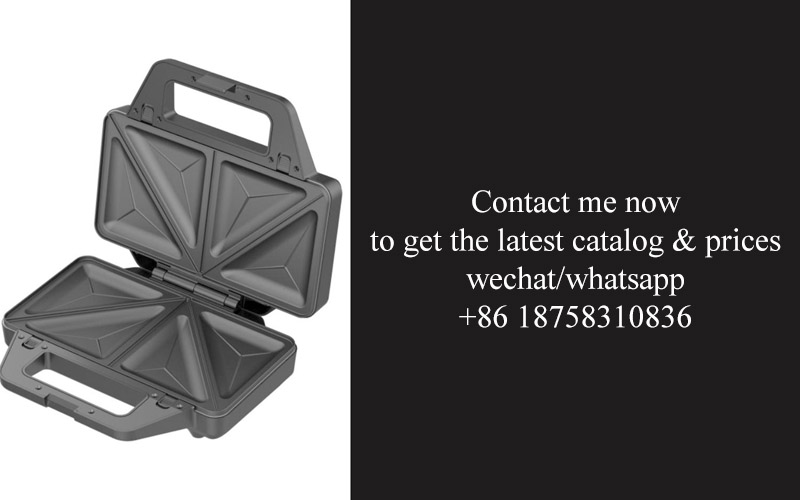
In the ever-evolving landscape of kitchen appliances, industry experts are weighing in on the latest innovations, offering their insights into what truly matters in the market. From durability and efficiency to user experience and sustainability, here’s a glimpse into the minds of those shaping the future of kitchen technology.
The Shift Towards Smart IntegrationExperts note that the integration of smart technology is no longer a niche feature but a fundamental aspect of modern kitchen appliances. The ability to connect devices through Wi-Fi and voice assistants is not just a convenience; it’s a necessity for those who demand seamless and efficient living spaces.
Durability in DesignThe emphasis on durability has never been stronger. As consumers become more environmentally conscious, the longevity of appliances is a key factor. Experts highlight the importance of robust construction, high-quality materials, and the design that can withstand the test of time, reducing the need for frequent replacements.
Energy Efficiency and SustainabilityWith climate change at the forefront of global concerns, energy efficiency has become a critical aspect. Experts point out that appliances that consume less energy not only save money but also contribute to a greener planet. The focus is on developing products that balance performance with energy conservation.
User Experience and AestheticsThe user experience is not just about functionality; it’s also about aesthetics. Experts agree that appliances should not only perform well but also complement the kitchen’s aesthetic. This includes sleek designs, intuitive interfaces, and user-friendly controls that make cooking and cleaning easier and more enjoyable.
Customization and PersonalizationCustomization is becoming a key trend, as consumers seek appliances that cater to their specific needs and preferences. Experts suggest that the ability to tailor settings, functions, and even the appearance of kitchen appliances will become increasingly important, allowing users to create a truly personalized kitchen environment.
The Role of Technology in CookingTechnology is not just about convenience; it’s also revolutionizing the way we cook. Experts discuss the rise of AI and machine learning in kitchen appliances, which can analyze cooking habits and suggest recipes, as well as optimize cooking times and temperatures for better results.
The Importance of Service and SupportEven the most advanced appliance can encounter issues. Experts stress the importance of reliable service and support. They note that manufacturers must prioritize customer satisfaction by offering comprehensive warranties, easy-to-access service centers, and responsive customer service.
The Impact of Social Media and InfluencersSocial media and influencer partnerships are playing a significant role in shaping consumer preferences. Experts observe that the influence of online reviews, testimonials, and social media posts cannot be underestimated. They advise appliance manufacturers to engage with these platforms to build trust and credibility.
The Rise of Eco-Friendly MaterialsThe move towards sustainability extends to the materials used in kitchen appliances. Experts highlight the growing use of recycled materials and eco-friendly components, not just to reduce the carbon footprint but also to meet the demands of environmentally conscious consumers.
The Future of Appliance InterconnectivityLooking ahead, experts predict a future where appliances will be even more interconnected. They envision a world where kitchen devices can communicate with each other, predict maintenance needs, and even order replacement parts automatically, creating a truly autonomous and efficient kitchen ecosystem.
The Global Impact of Local RegulationsIndustry experts also consider the impact of local regulations on appliance design and manufacturing. They note that compliance with various standards and certifications is essential, and that these regulations can vary significantly from one region to another.
The Balance Between Innovation and AffordabilityFinally, experts emphasize the need to balance innovation with affordability. They suggest that while advanced features are desirable, they must be accessible to a wide range of consumers, ensuring that the benefits of new technology are not confined to a select few.
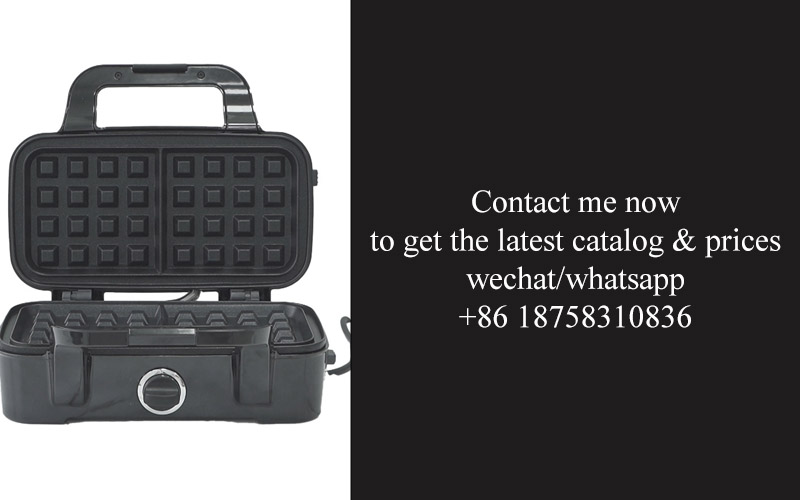
In a world where technological advancements are reshaping industries, the introduction of -30°C cold resistant appliances marks a significant milestone in the kitchen appliance sector. Let’s delve into a few case studies showcasing the successful implementation of these innovative devices.
The first case involves a high-end residential complex in New York City. The building’s management sought to upgrade their kitchen facilities to withstand the city’s unpredictable winters. After a thorough evaluation, they chose a series of -30°C cold resistant refrigerators, ovens, and dishwashers. The appliances not only withstood the extreme temperatures but also enhanced the residents’ experience with their seamless performance and modern aesthetics.
In another instance, a European hotel chain was looking to revamp their kitchen infrastructure to cater to a diverse clientele, including those from colder climates. They selected a range of -30°C cold resistant kitchen appliances, which included freezers, deep-freeze storage units, and even outdoor grills. The result was a kitchen that could maintain optimal conditions for a wide array of ingredients, regardless of the season.
A commercial kitchen in Canada faced a unique challenge: their walk-in cooler needed to be operational in temperatures as low as -40°C. After extensive research, they invested in -30°C cold resistant models, which proved to be a game-changer. Not only did these appliances maintain the integrity of their products, but they also did so with energy efficiency that reduced their operational costs significantly.
A family-owned bakery in Minnesota required a reliable ice cream maker that could function in the harsh winter months. They discovered a -30°C cold resistant model that not only performed flawlessly in sub-zero temperatures but also had a compact design that fit seamlessly into their existing kitchen layout. The bakery’s customers were thrilled with the consistency and quality of the ice cream, thanks to the new appliance.
A gourmet restaurant in Tokyo, known for its Japanese cuisine, faced a problem with their traditional Japanese refrigerator, which struggled to maintain the necessary temperatures for certain ingredients. By switching to a -30°C cold resistant refrigerator, the restaurant was able to preserve the freshness and texture of these delicate items, enhancing their culinary offerings.
In a rural area of Norway, a community hall needed a reliable way to store and serve food at events, even when the outdoor temperatures plummeted. They installed a -30°C cold resistant ice machine and a countertop refrigerator, which provided a stable and energy-efficient solution to their needs. The community hall’s patrons were delighted with the convenience and reliability of these appliances.
A food truck operator in Chicago struggled with maintaining the cold chain for their mobile kitchen during winter months. By outfitting their vehicle with -30°C cold resistant refrigeration units, they were able to keep their food products safe and fresh, regardless of the freezing temperatures. The appliance’s durability and performance were crucial for the success of their business.
In each of these case studies, the -30°C cold resistant appliances have proven to be a valuable asset. They have not only met the demands of extreme weather conditions but have also enhanced the operational efficiency and customer satisfaction of the businesses that have adopted them. The success stories underscore the importance of innovation in kitchen appliance design and the impact it can have on various industries.
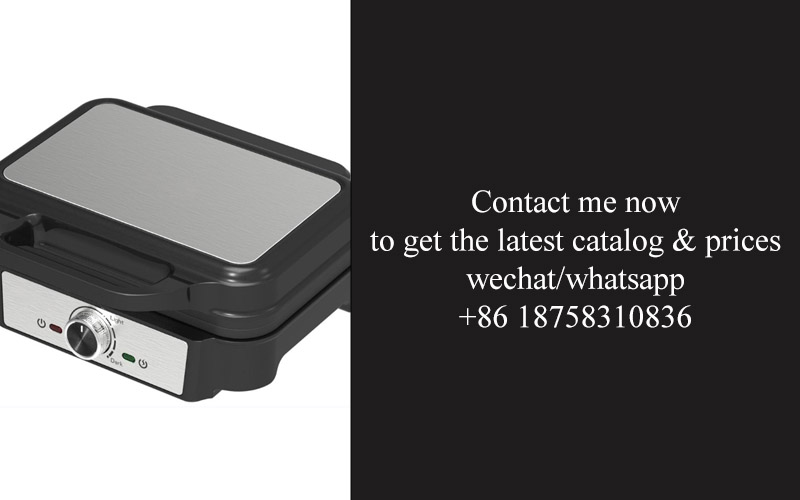
The landscape of the kitchen appliance industry is continually evolving, and with it, a host of challenges and opportunities emerge. From technological advancements to shifting consumer preferences, these factors play a pivotal role in shaping the future of the market.
Adapting to Energy Efficiency StandardsEnergy concerns have never been more at the forefront, and this extends to kitchen appliances. As standards become stricter, manufacturers must innovate to create products that are not only energy-efficient but also durable and reliable. This challenge presents an opportunity for those who can develop appliances that not only meet but exceed current regulations.
The Rise of Smart TechnologyThe integration of smart technology into kitchen appliances has been a transformative trend. Consumers are increasingly looking for appliances that can be controlled remotely, offer predictive maintenance, and integrate with other smart home devices. While this adds complexity to the design process, it also opens up a world of possibilities for creating unique and interconnected kitchen experiences.
Customization and PersonalizationWith the abundance of choice available to consumers, there’s a growing demand for personalization. Customers are seeking appliances that cater to their specific needs and preferences. This could range from different finishes and color options to customizable features that cater to specific cooking habits or dietary requirements. For companies, this means investing in research and development to offer more tailored solutions.
Sustainability and Environmental ImpactEnvironmental concerns are a major driving force in the kitchen appliance market. Consumers are more likely to purchase products from brands that prioritize sustainability and have a lower environmental footprint. This challenge lies in finding sustainable materials and manufacturing processes that do not compromise on the quality and longevity of the appliances.
Globalization and Market ExpansionThe appliance industry is no longer confined to local markets. Brands are looking to expand globally, which brings its own set of challenges. Adapting to different regulatory standards, cultural preferences, and supply chain logistics can be daunting. However, for those who can navigate these complexities, there lies a vast opportunity to tap into new markets and grow their customer base.
Safety and ComplianceSafety is paramount in the kitchen appliance industry. As new safety protocols and regulations are introduced, manufacturers must ensure that their products are not only compliant but also exceed expectations. This requires rigorous testing and quality control, which can be a challenge but also an opportunity to set a brand apart through excellence in safety standards.
E-commerce and Direct-to-Consumer SalesThe rise of e-commerce has changed the way consumers purchase appliances. Companies that can effectively leverage online platforms and offer a seamless online shopping experience have a significant advantage. This shift also presents the opportunity for direct-to-consumer sales, cutting out the middleman and potentially reducing costs for both the manufacturer and the consumer.
Customer Service and WarrantiesIn an industry where product longevity is crucial, customer service and warranties play a vital role. Consumers are more likely to invest in a brand that offers comprehensive support and peace of mind. While this requires a substantial investment in customer service infrastructure, it also builds brand loyalty and trust.
Technological Integration and ConnectivityThe integration of advanced technologies such as AI, IoT, and 5G continues to push the boundaries of what kitchen appliances can do. While the development and maintenance of such technologies can be challenging, the rewards are substantial, including enhanced user experience, predictive maintenance, and the potential for new service offerings.
Talent Acquisition and RetentionThe success of any appliance manufacturer hinges on the talent within their ranks. Acquiring and retaining skilled engineers, designers, and sales professionals is critical. This challenge involves creating a culture that attracts top talent and provides opportunities for growth and innovation.
In conclusion, while the kitchen appliance industry faces numerous challenges, each presents a unique opportunity for innovation and growth. By embracing these challenges head-on and leveraging the opportunities they bring, manufacturers can not only stay competitive but also lead the way in shaping the future of kitchen appliances.
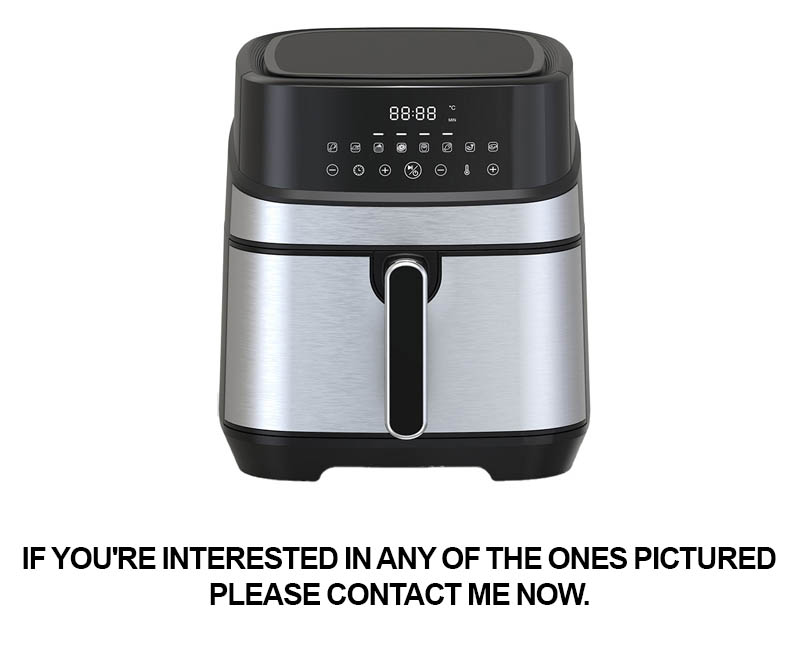
The -30°C cold resistant model has emerged as a revolutionary innovation in the kitchen appliance industry. It’s not just about withstanding extreme temperatures; it’s about redefining what’s possible in modern kitchens. Here’s a look at the challenges and opportunities that come with this groundbreaking development.
Innovation often brings about a wave of challenges, and the -30°C cold resistant model is no exception. Designing and manufacturing appliances that can operate efficiently at such low temperatures requires advanced engineering and materials science. Companies must invest heavily in research and development to create components that are not only durable but also energy-efficient.
However, these challenges are not without their opportunities. As consumers demand more from their kitchen appliances, the demand for high-quality, cold-resistant models is on the rise. This creates a significant market opportunity for manufacturers who can successfully navigate the complexities of producing such products.
One key challenge is the cost factor. High-tech appliances like the -30°C model often come with a premium price tag. This can be a barrier for some consumers, particularly in regions where economic constraints are more pronounced. Despite this, the long-term savings on energy and maintenance can make the initial investment worthwhile.
The rise of smart kitchen technology has also presented a unique opportunity. By integrating the -30°C cold resistant models with smart features, manufacturers can tap into the growing market for connected appliances. This not only enhances the user experience but also opens up new avenues for data-driven insights and personalized usage patterns.
Another challenge lies in the logistics of distribution. Transporting and storing these appliances in regions with extreme cold can be tricky. Ensuring that the products reach the consumer in perfect working condition requires sophisticated supply chain management. Yet, this logistical challenge also presents an opportunity to refine and optimize supply chain operations, potentially leading to cost savings and improved efficiency for all parties involved.
From a regulatory standpoint, there are compliance issues to consider. Safety standards for appliances that operate at such low temperatures are stringent, and manufacturers must adhere to these guidelines to avoid any legal repercussions. However, by meeting these high standards, companies can also position themselves as leaders in safety and innovation, which can be a powerful differentiator in the market.
The opportunity to create new product lines and expand market share is substantial. As consumers become more environmentally conscious, there’s a growing preference for appliances that are both energy-efficient and durable. The -30°C cold resistant model aligns perfectly with these values, making it an attractive option for eco-friendly households.
Additionally, the potential for cross-industry collaboration cannot be overlooked. Appliances that can withstand extreme temperatures might find applications in other sectors, such as pharmaceuticals or food storage, where maintaining specific temperature conditions is critical. This opens up a world of possibilities for manufacturers looking to diversify their offerings.
In the realm of customer service, the -30°C cold resistant model demands a high level of support. Consumers will expect comprehensive after-sales service, including maintenance and repair services that can operate in extreme conditions. This creates an opportunity for companies to build a strong customer loyalty program and establish themselves as a trusted brand.
As the world becomes more connected, the -30°C cold resistant model also faces the challenge of keeping up with global standards. Appliances designed for one region may not be suitable for another due to varying climate conditions. Adapting these models to different markets requires a nuanced understanding of local needs and preferences.
The environmental impact of producing such high-tech appliances is another concern. The energy-intensive processes and the materials used in the construction of these appliances must be carefully managed to minimize the carbon footprint. This challenge, however, is also an opportunity to invest in greener production methods and sustainable materials, thereby reducing the ecological impact of kitchen appliances.
In conclusion, the -30°C cold resistant model represents a significant leap forward in the kitchen appliance industry. While it comes with its fair share of challenges, the opportunities it presents are vast. From expanding market reach to fostering innovation and sustainability, the -30°C cold resistant model is poised to shape the future of kitchen appliances in exciting ways.